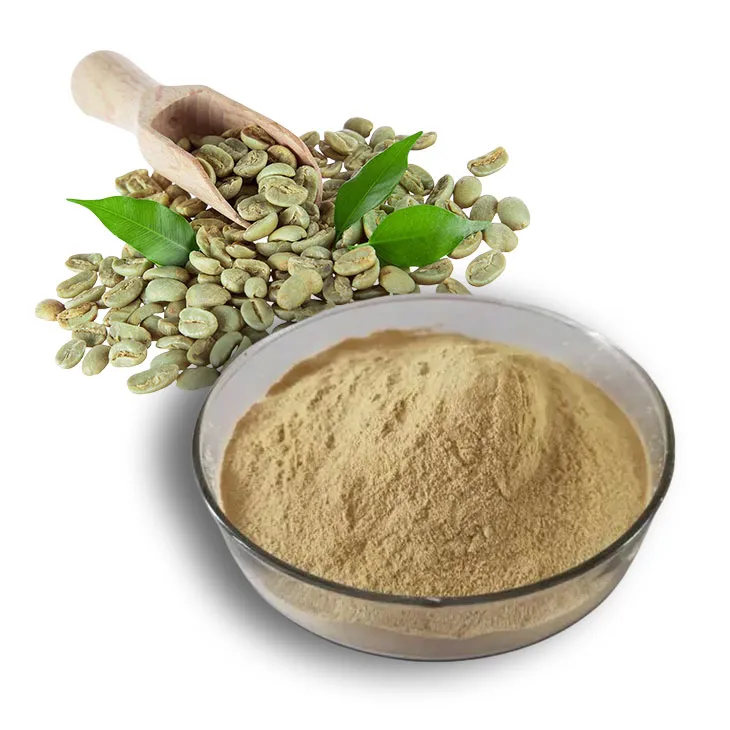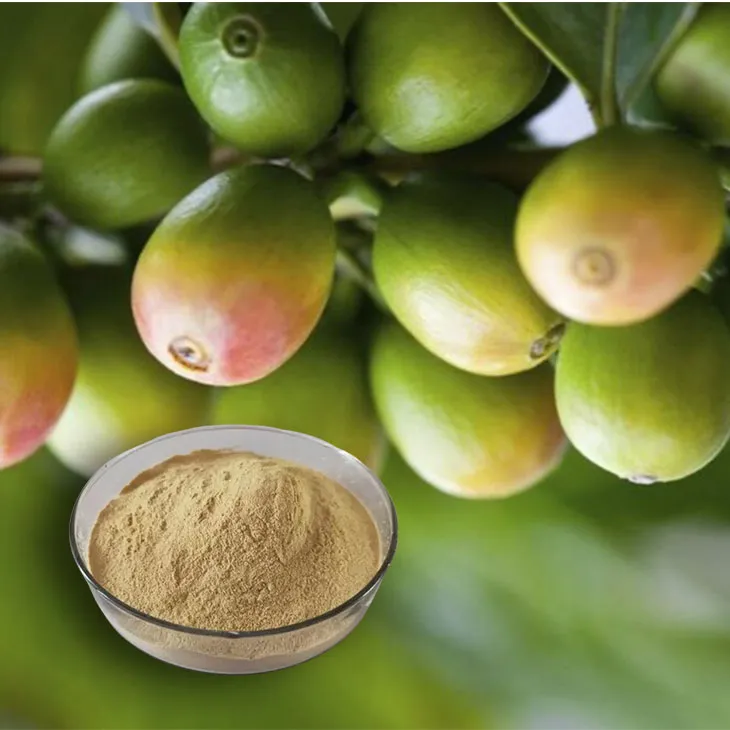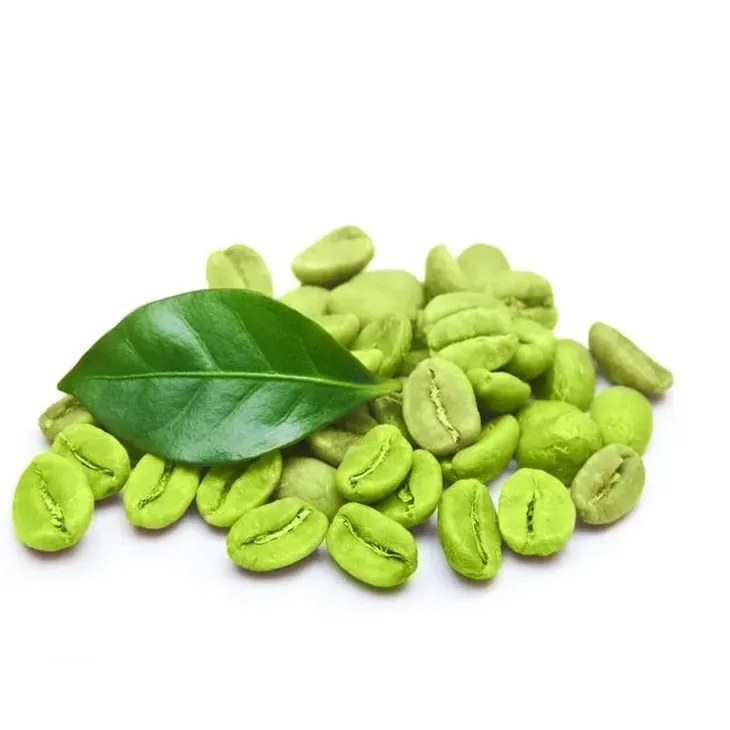- 0086-571-85302990
- sales@greenskybio.com
Optimal Bioavailability of Green Coffee Bean Extract.
2024-11-29

1. Introduction
Green coffee bean Extract has gained significant attention in recent years due to its potential health benefits. It is rich in chlorogenic acids, which are associated with antioxidant, anti - inflammatory, and anti - diabetic properties. However, the bioavailability of these beneficial compounds is crucial for realizing their full potential in promoting health. Bioavailability refers to the proportion of a drug or other substance that enters the circulation when introduced into the body and so is able to have an active effect. In the case of Green coffee bean Extract, understanding and optimizing its bioavailability can enhance its effectiveness in various health - related applications.

2. Factors Affecting Bioavailability of Green coffee bean Extract
2.1 Extraction Methods
Solvent - based extraction: One of the most common methods for extracting green coffee bean extract is solvent - based extraction. Different solvents can have a significant impact on the bioavailability of the resulting extract. For example, ethanol - based extractions are often used. Ethanol can effectively dissolve chlorogenic acids and other bioactive compounds from the coffee beans. However, the purity and concentration of the ethanol, as well as the extraction time and temperature, need to be carefully controlled. If the extraction conditions are not optimal, it may lead to the degradation of some bioactive compounds or the presence of unwanted residues, which can affect bioavailability.
Supercritical fluid extraction: Supercritical fluid extraction, typically using carbon dioxide as the supercritical fluid, is another extraction method. This method has several advantages in terms of bioavailability. It can operate at relatively low temperatures, which helps to preserve the integrity of heat - sensitive bioactive compounds in the green coffee beans. Also, the supercritical carbon dioxide can selectively extract the desired compounds, resulting in a cleaner and more concentrated extract. The resulting extract may have higher bioavailability as it contains a higher proportion of intact and pure bioactive components.
2.2 Formulation Techniques
Nano - formulation: Nano - formulation is an emerging technique for enhancing the bioavailability of green coffee bean extract. By reducing the particle size of the extract to the nanoscale, the surface area available for absorption is increased. This allows for better interaction with the intestinal mucosa and more efficient uptake into the bloodstream. For example, nano - emulsions can be created where the green coffee bean extract is encapsulated within a nano - sized droplet. These nano - emulsions can protect the extract from degradation in the gastrointestinal tract and improve its solubility, both of which contribute to enhanced bioavailability.
Encapsulation: Encapsulation is another important formulation technique. It involves enclosing the green coffee bean extract within a protective shell or matrix. This can be made from various materials such as polysaccharides or proteins. Encapsulation can protect the extract from environmental factors such as moisture, light, and oxygen, which could otherwise degrade the bioactive compounds. It can also control the release of the extract in the gastrointestinal tract, ensuring that it is released at the optimal location for absorption. For example, enteric - coated capsules can prevent the extract from being released in the stomach (where the acidic environment may cause degradation) and instead release it in the intestine, where absorption is more favorable.

3. The Role of Digestive System in Bioavailability
The digestive system plays a crucial role in determining the bioavailability of green coffee bean extract. When the extract is ingested, it first enters the stomach. In the stomach, the acidic environment can have both positive and negative effects. While some compounds may be stable in the acidic pH, others may be partially degraded. For example, chlorogenic acids may undergo hydrolysis in the stomach, which can change their chemical structure and potentially affect their bioavailability.
Once the extract moves to the small intestine, this is the main site for absorption. The intestinal epithelium has various transporters and mechanisms for taking up the bioactive compounds from the green coffee bean extract. However, the presence of other food components in the intestine can also influence absorption. For instance, dietary fiber can bind to some of the compounds in the extract, reducing their availability for absorption. On the other hand, certain nutrients or co - factors may enhance the absorption of the extract's bioactive components.
The role of gut microbiota in the bioavailability of green coffee bean extract cannot be ignored. The gut microbiota can metabolize some of the compounds in the extract, converting them into more or less bioavailable forms. For example, some bacteria in the gut can break down chlorogenic acids into metabolites that may have different bioactivities and bioavailabilities compared to the parent compounds.

4. Influence of Dietary Factors on Bioavailability
Dietary fats: Dietary fats can have a significant impact on the bioavailability of green coffee bean extract. When consumed together, fats can increase the solubility of the extract's hydrophobic components. This is because many bioactive compounds in the extract, such as chlorogenic acids, are lipophilic to some extent. Fats can form micelles with these compounds, facilitating their absorption in the intestine. For example, consuming green coffee bean extract with a meal containing healthy fats like olive oil may enhance its bioavailability.
Protein intake: Protein intake can also influence the bioavailability of the extract. Some proteins may interact with the bioactive compounds in the green coffee bean extract. For example, certain proteins may bind to chlorogenic acids, either enhancing or reducing their absorption depending on the nature of the interaction. Additionally, the digestion products of proteins, such as amino acids, may also play a role in the absorption process. For instance, some amino acids can act as carriers or co - factors for the uptake of the extract's components.
Other dietary components: Other dietary components such as polyphenols from other sources (e.g., fruits and vegetables) can interact with the green coffee bean extract. These interactions can be either synergistic or antagonistic. In a synergistic interaction, the combined effect of the different polyphenols can enhance the overall antioxidant or health - promoting properties and potentially also the bioavailability of the green coffee bean extract. In an antagonistic interaction, the presence of other polyphenols may compete for absorption mechanisms or cause chemical changes that reduce bioavailability.
5. Optimizing Bioavailability for Enhanced Health Benefits
To optimize the bioavailability of green coffee bean extract for enhanced health benefits, a multi - faceted approach is required. Firstly, choosing the right extraction method is crucial. As discussed earlier, supercritical fluid extraction may be a better option in terms of obtaining a high - quality extract with good bioavailability. However, the cost and complexity of this method need to be considered.
Secondly, employing advanced formulation techniques such as nano - formulation and encapsulation can significantly improve bioavailability. These techniques can protect the extract from degradation, improve solubility, and enhance absorption. For example, formulating the extract into a nano - emulsion or using enteric - coated encapsulation can be effective strategies.
Thirdly, considering dietary factors when consuming green coffee bean extract is important. Combining the extract with a meal containing appropriate amounts of dietary fats and proteins can enhance its bioavailability. Additionally, being aware of the potential interactions with other dietary components can help in maximizing the health benefits.
In conclusion, the bioavailability of green coffee bean extract is a complex topic influenced by multiple factors including extraction methods, formulation techniques, the digestive system, and dietary factors. By understanding and optimizing these factors, it is possible to enhance the bioavailability of green coffee bean extract, thereby maximizing its potential health benefits. This can lead to more effective applications in areas such as antioxidant therapy, anti - inflammation, and diabetes management.
FAQ:
What is green coffee bean extract?
Green coffee bean extract is a substance derived from unroasted coffee beans. It contains various compounds, such as chlorogenic acids, which are believed to have potential health benefits, including antioxidant, anti - inflammatory, and potential effects on weight management.
Why is bioavailability important for green coffee bean extract?
Bioavailability determines how much of the active compounds in the green coffee bean extract can be absorbed and utilized by the body. If the bioavailability is low, only a small fraction of the potentially beneficial compounds will reach the target tissues, reducing the effectiveness of the extract in providing health benefits.
How do extraction methods affect the bioavailability of green coffee bean extract?
Different extraction methods can yield different compositions and forms of the extract. For example, some extraction methods may better preserve the integrity of the active compounds like chlorogenic acids. Solvent - based extractions need to be carefully optimized to avoid degradation or modification of the compounds during the process. If the extraction process is too harsh, it may lead to the formation of less bioavailable forms of the compounds, thus reducing the overall bioavailability of the extract.
What formulation techniques can enhance the bioavailability of green coffee bean extract?
Formulation techniques such as encapsulation can protect the active compounds from degradation in the digestive tract and enhance their solubility. Nano - encapsulation is one such advanced technique that can increase the surface area of the extract particles, facilitating better absorption. Another approach could be combining the extract with substances that enhance its permeability across the intestinal barrier, like certain lipids or surfactants.
Are there any other factors that influence the bioavailability of green coffee bean extract?
Yes, factors such as the individual's diet, gut microbiota, and physiological state can also play a role. For example, a diet high in fiber may affect the absorption of the extract. The gut microbiota can metabolize the compounds in the extract, either enhancing or reducing their bioavailability. Also, factors like age, gender, and overall health status can impact how well the body absorbs and utilizes the green coffee bean extract.
Related literature
- Bioavailability of Chlorogenic Acids from Green Coffee Bean Extract: Influence of Processing and Matrix"
- "Enhancing the Bioavailability of Green Coffee Bean Extract: A Review of Current Strategies"
- "The Role of Formulation in Optimizing the Bioavailability of Green Coffee Bean Extract"
- ▶ Hesperidin
- ▶ citrus bioflavonoids
- ▶ plant extract
- ▶ lycopene
- ▶ Diosmin
- ▶ Grape seed extract
- ▶ Sea buckthorn Juice Powder
- ▶ Beetroot powder
- ▶ Hops Extract
- ▶ Artichoke Extract
- ▶ Reishi mushroom extract
- ▶ Astaxanthin
- ▶ Green Tea Extract
- ▶ Curcumin Extract
- ▶ Horse Chestnut Extract
- ▶ Other Problems
- ▶ Boswellia Serrata Extract
- ▶ Resveratrol Extract
- ▶ Marigold Extract
- ▶ Grape Leaf Extract
- ▶ blog3
- ▶ blog4
-
Certified organic aged garlic extract.
2024-11-29
-
Active components in yam extract.
2024-11-29
-
Extraction process of stevia extract.
2024-11-29
-
Chinese Grape Seed Extract Powder Factory.
2024-11-29
-
Soy Extract
2024-11-29
-
Phyllanthus Emblica Extract
2024-11-29
-
Baicalin
2024-11-29
-
Shikone Extract
2024-11-29
-
Red Date Extract
2024-11-29
-
Senna Leaf Extract
2024-11-29
-
Garcinia Cambogia Extract
2024-11-29
-
Beetroot juice Powder
2024-11-29
-
Nettle Root Extract
2024-11-29
-
Peppermint Extract Powder
2024-11-29





















